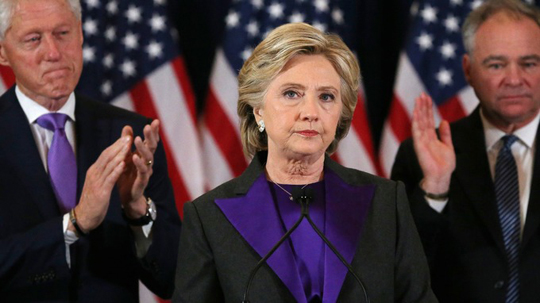Washington, Nov 13: Hillary Clinton has blamed the FBI for her loss at the hands of her Republican challenger Donald Trump, claiming the decision to revive the probe into her email accounts stopped her momentum towards a historic win.

"There are lots of reasons why an election like this is not successful. Our analysis is that Comey's letter raising doubts that were groundless, baseless, proven to be, stopped our momentum," Clinton told fundraisers and donors during a conference call yesterday.
Clinton said her campaign was winning until FBI Director James Comey wrote a letter to the Congressional leadership that they have reopened the investigations into the email scandal.
Two days before the elections, the FBI again sent a letter to the Congressional leadership that it did not find anything new in the investigation that was primarily screening of some 650,000 emails that it found in a laptop of one of her aide, Huma Abedin, which she shared with her estranged husband, Anthony Weiner.
"The second letter, even that gave her the clean chit, hit her more as this energised Trump's supporters. Although she got more popular votes, Trump was declared the winner as he grabbed more than 270 electoral college votes, required to win the presidential elections," said the 69-year-old former Secretary of State.
"We dropped, and we had to keep really pushing to regain our advantage, which going into last weekend we had," she said.
"We were once again up in all but two of the battleground states, and we were up considerably in some that we ended up losing. And we were feeling like we had to put it back together," Clinton said.
In an internal campaign memo, Clinton's campaign manager Robby Mook claimed that the former Secretary of State was poised to win the elections, but the two letters from FBI changed the scenario.
"There is no question that a week before the Election Day, Secretary Clinton was poised for a historic win. In the end, less than 110K votes out of tens of millions cast on Election Day made the difference in the race," Mook said.
He also appeared to blame the third party candidate. "It is worth mentioning that Jill Stein alone got 130K votes in those States – and though her votes don't distribute perfectly to cover the margin across the three States, it is an important reminder of 3rd party votes," he said.
"We believe that we lost this election in the last week. Comey's letter in the last 11 days of the election both helped depress our turnout and drove away some of our critical support among college-educated white voters – particularly in the suburbs.
"We also think Comey's second letter, which was intended to absolve Secretary Clinton actually helped to bolster Trump's turnout," Mook added.





Comments
Add new comment